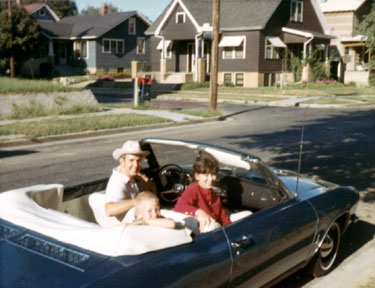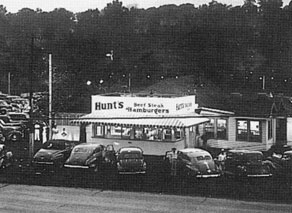Councilman Turner wants the council to hear from you regarding cable television. The city’s franchise agreement with Insight is ending next year, and Turner thinks Insight’s service leaves something to be desired. Several other council members chimed in with concerns about everything from high prices to service responsiveness. So, the motion to hire an attorney to negotiate a new franchise agreement was amended: in addition to hiring the attorney, the council will hold neighborhood meetings to find out how the public feels about their cable service.
Councilman Morris brought up a good point, too — technology has changed dramatically in the past twenty years, and technological change isn’t getting any slower, so we probably shouldn’t renew for twenty more years. In fact, Randy Ray has already indicated he’s hoping for a shorter term. Morris also pointed out that Insight doesn’t just offer cable TV anymore, but also internet access and even phone service in some communities. How will a new franchise agreement affect these additional services, if at all?
Also, we know what the city wants to get out of a new agreement, but what does Insight want? I’m going to go out on a limb (ha ha) and guess a lower franchise fee. The city used to collect 10% of their (then GE Cablevision’s) adjusted gross revenue until the FCC decreed in April 1981 that franchise authorities couldn’t collect more than 5%. The franchise fee now is still 5% of Insight’s adjusted gross revenue, payable monthly. Back in 1986, they (UA Cablesystems at that time) tried to get Peoria County to agree to a 3% rate, but the County told them if they wouldn’t give them the same 5% they gave the city, they could remove their equipment and get the heck out of town. So UA backed down and passed the higher cost on to the subscribers.
My guess is they will argue that they face increased competition from satellite providers like Dish Network who don’t have to pay local fees, and need to have the franchise fee lowered so they can keep their prices competitive. I expect they’ll ask for 3% or less.
I’ll look forward to hearing the public input. What’s important to you? How do you feel about Insight’s service? What do you think needs to be included in the next franchise agreement?
* * * * * * * * * * * *
And now for a little history, for those who might be interested:
Peoria has only negotiated two cable franchise agreements. The first one was awarded in 1966 to General Electric (GE) Cablevision for twenty years. At that time, cable television was a hotly debated topic locally and nationally. Broadcast stations didn’t like it, worrying that bringing in stations from other cities would draw viewers away and hurt their ad revenue. The FCC muddled through all kinds of different regulations, worried that pay TV would “siphon off all the good programming from free TV.” Thus, even though the franchise was awarded in 1966, GE didn’t start offering cable television until 1972 because, until then, the FCC prohibited cable companies from piping in channels from other cities (e.g., Chicago). GE figured people wouldn’t pay for exactly the same stations they can get for free over the air, so they waited until they could offer extra channels like WGN.
The franchise agreement was transferred from GE to UA Cablesystems. They renewed in 1986 — that’s the second and last franchise agreement Peoria negotiated. I got a copy of it through a Freedom of Information Act request, and I converted it to digital form — as long as you have Adobe Acrobat Reader ver. 5.0 or greater, you can read it here. What do you think? Are they living up to their agreement?
The agreement is somewhat entertaining to me, just because of how much times have changed since 1986. Consider, for instance, what you remember about 1986. I was a sophomore in high school then, and not many people had personal computers compared to today. It was the year of the Challenger disaster, as well as the Chernobyl nuclear disaster. Reagan was president. We were watching Ferris Bueler’s Day Off and Family Ties while listening to Take On Me by A-ha on KZ-93. The cable franchise agreement looks like it was typed up on a typewriter instead of a computer (it probably was). At that time, the city wanted the cable system to have a capacity of a whopping thirty channels initially — and they wrote in the agreement that they wanted it upgraded to 52 channels after ten years.
In September 1986, UA Cablesystems was bought out by Tele-Communications, Inc. (TCI). It was TCI Cable for about twelve years. Then in October 1998, TCI merged with AT&T Consumer Services (ACS). But, it wasn’t long before the franchise was transferred to Insight (December 2000). Insight is now the ninth largest cable operation in the U.S., with 1.3 million subscribers in Illinois, Indiana, Kentucky, and Ohio. They brought in over $269 million in the first quarter of 2005. Their home office is in New York.
So they have ample capital for waging war on franchise agreements. Galesburg also uses Insight for their cable provider. If this article from The Zephyr is at all accurate in describing their negotiations (I have no way of verifying it, so I can’t vouch for it), then Randy Ray and his new cable attorney better be on their toes whenever the contract comes back from New York with revisions.






